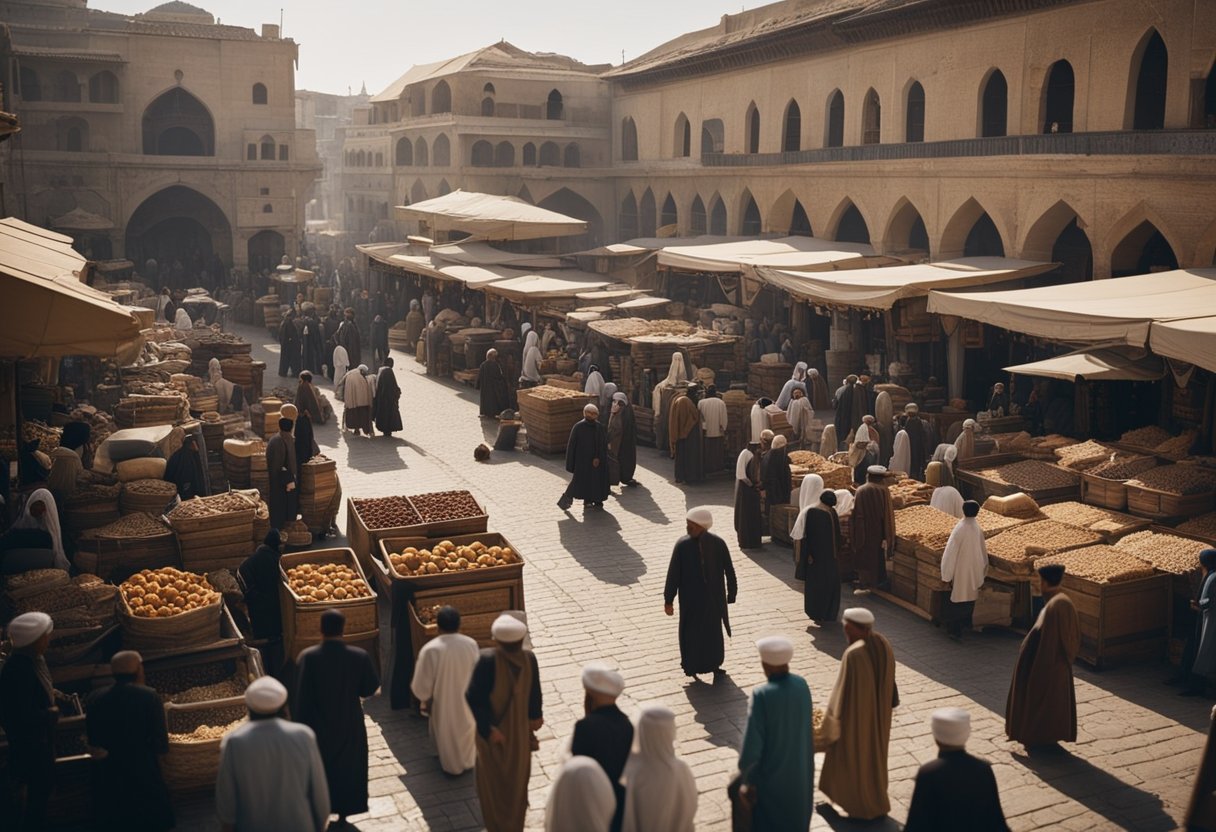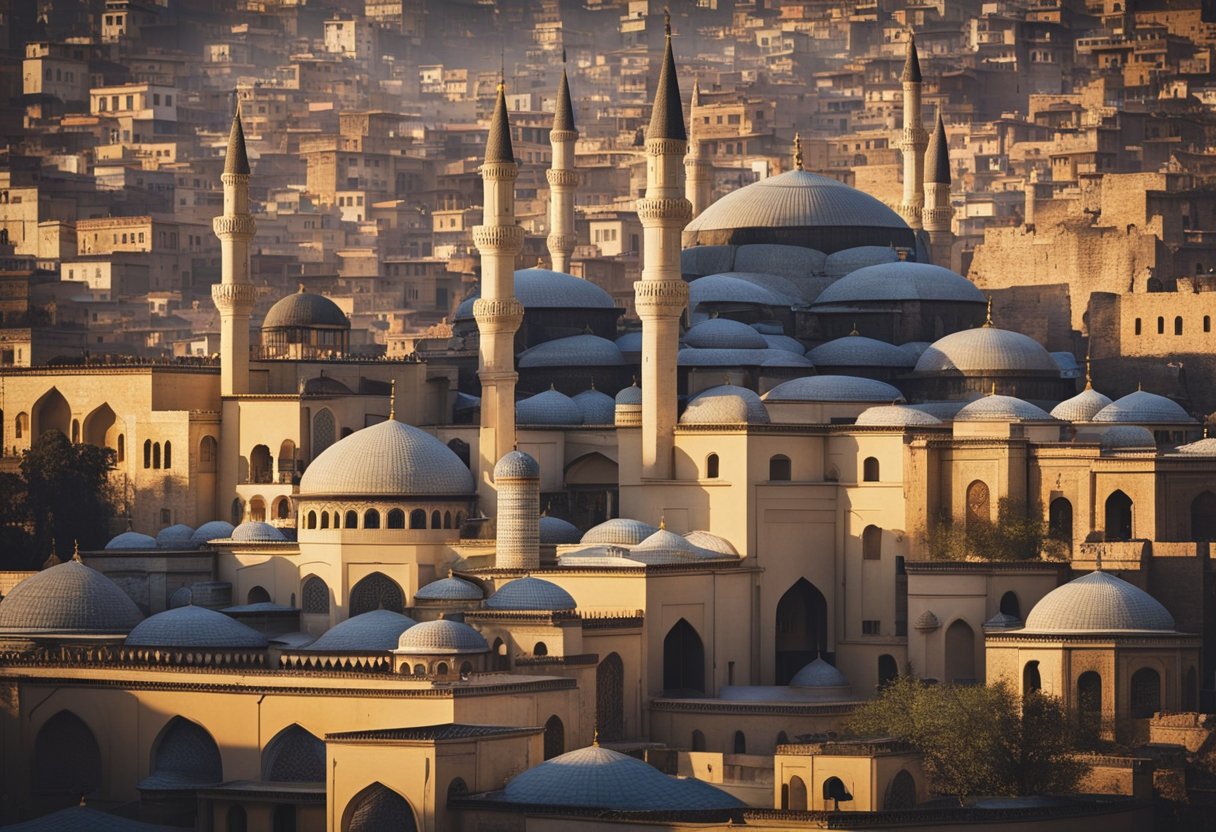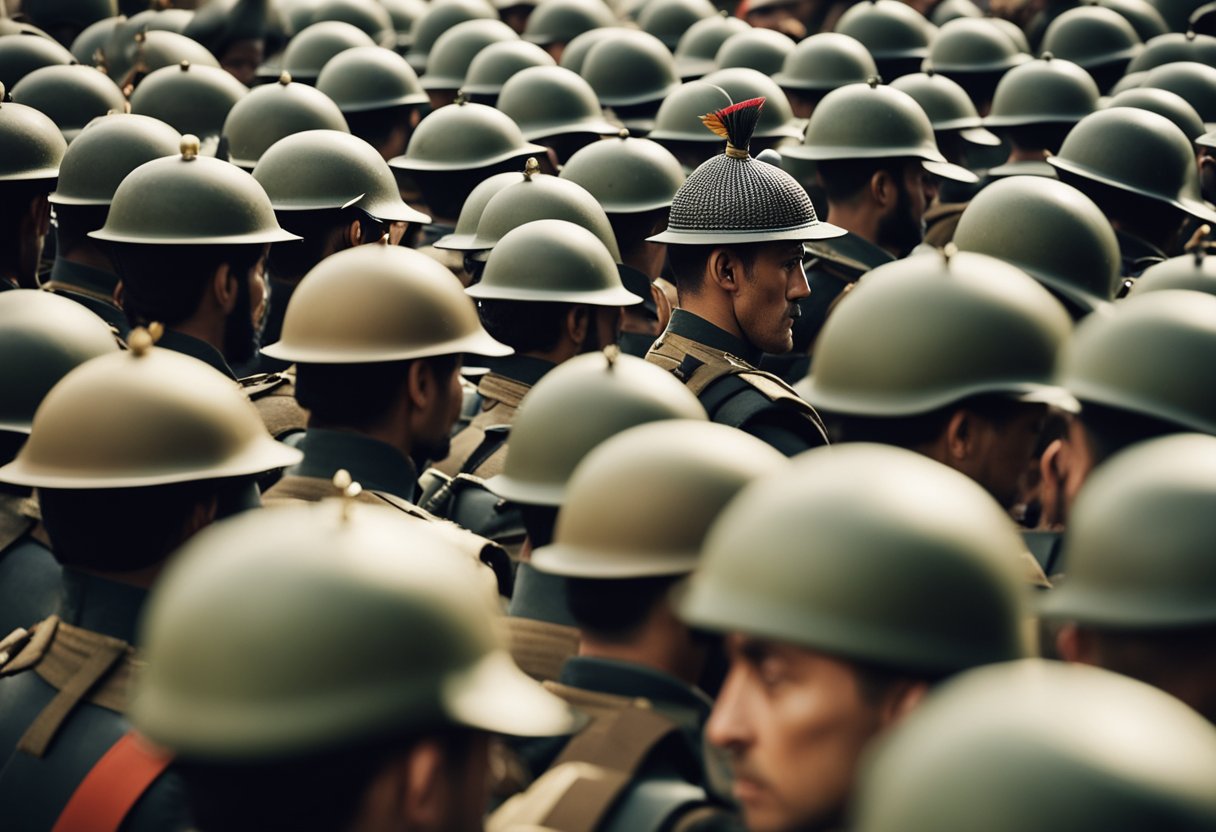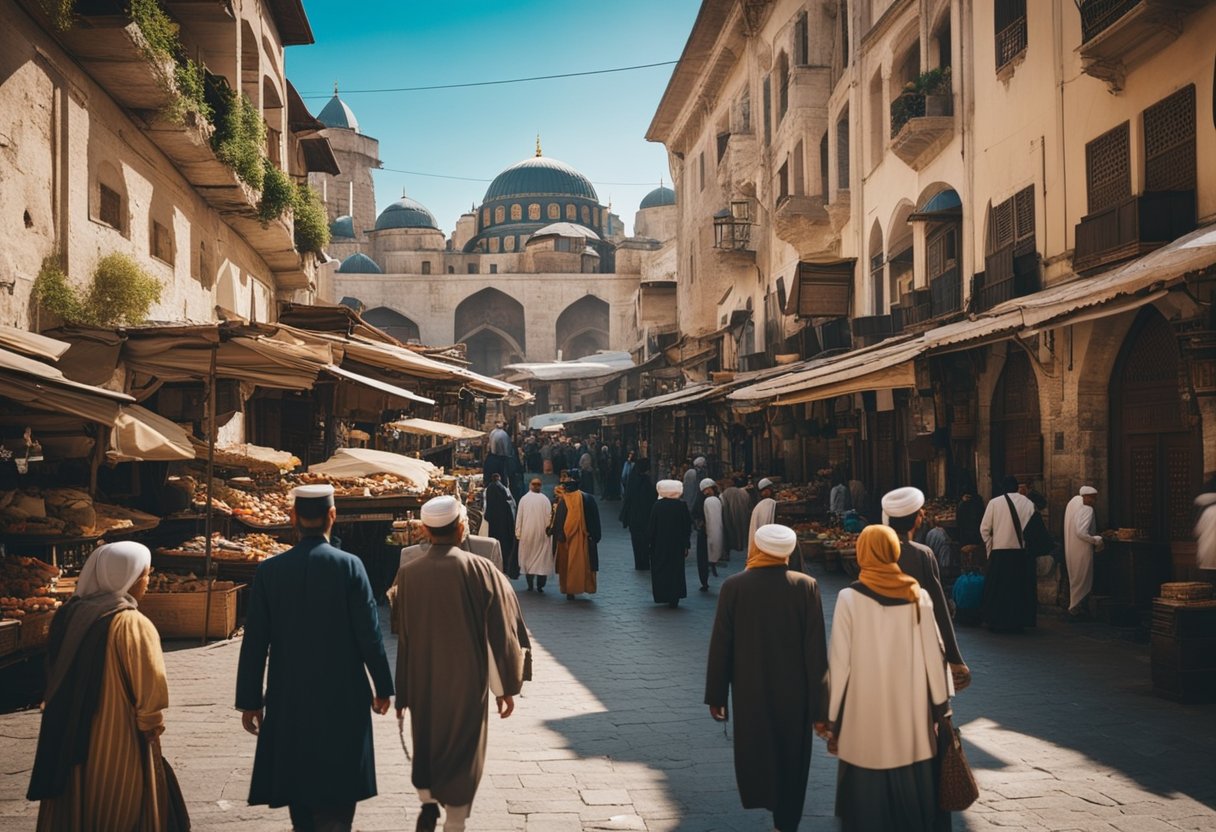The Ottoman Empire: A Crossroads of Civilisations – Unveiling a Melting Pot of Diverse Cultures

Updated On: April 22, 2024 by Noha Basiouny
The Ottoman Empire was a pivotal force in global history, serving as a crossroads of civilizations across Europe, Asia, and Africa. Established in the late 13th century by the leader Osman I, it expanded to become a powerful empire that left an indelible mark on the world’s political, cultural, and economic landscapes. The empire’s strategic location bridged the East and West, fostering a melting pot of traditions and ideas that contributed to its vast influence and longevity.
Governed through a sophisticated political structure, the Ottoman Empire reached its zenith in the 15th and 16th centuries, becoming an epicentre of trade, military prowess, and cultural richness. It was distinguished by its diverse society, robust economy, and innovative administrative system. The Ottomans established an array of artistic and architectural wonders, reflecting the empire’s commitment to cultural advancement and scholarly pursuits.
Table of Contents
Origins and Rise of the Ottoman Empire
In tracing the ascent of one of history’s most formidable empires, we uncover a narrative that begins with a modest Anatolian beylik and culminates in an empire that straddled continents.
Osman I and the Foundation
Osman I, the eponymous founder of the Ottoman dynasty, established the empire’s initial foothold in northwestern Anatolia around the end of the 13th century. Amidst the declining Byzantine power and the fractious Seljuq successor states, Osman capitalised on the prevailing instability. Under his leadership, the Ottoman military began to unify the Turkish tribes in the region, laying the groundwork for the expansive empire that was to follow.
Territorial Expansions
The Ottomans launched their territorial conquests aggressively, absorbing lands from the enfeebled Byzantine Empire and expanding into the Balkans. Their military endeavours were characterised by the ghazi ideal, propelling them to challenge and annex key Byzantine cities. These strategic conquests not only bolstered their territorial reach but also amplified their influence, slowly transitioning from a principality into a significant transcontinental empire.
Political Structure and Governance
The Ottoman Empire’s political structure was intricately designed with a clear hierarchy and functional subdivisions. This ensured the efficient administration of the expansive and culturally diverse territories under its control.
The Sultanate
The Sultan stood as the supreme ruler of the Ottoman Empire. Our sovereign held absolute political and military authority and was also the caliph of the Islamic world, combining religious significance with their secular role. The title of Sultan was hereditary, often passed from father to son, which established a dynastic tradition within the governing elite. Our empire’s capital, Constantinople, served not just as the seat of power but also as a vibrant epicentre of political affairs, where the Sultan’s court set the stage for the governance of the realm.
Administrative Divisions
We divided our empire into several administrative units for more straightforward governance. These units were known as vilyets, governed by appointed officials who ensured the Sultan’s orders were carried out across the vast territories. Within these divisions, various religious communities, known as millets, were granted a degree of autonomy, allowing them to govern themselves according to their own laws and practices. While autonomous, millets still operated under the overarching authority of the Ottoman government and its administrative framework. This system helped in managing the complexities of the empire’s extensive and diverse populace.
Within the courts, which played a crucial role in our governance, judicial matters were addressed with both secular and religious oversight, reflecting the empire’s dual nature as a seat of religious significance and a robust political entity.
The Ottoman Empire at its Zenith
In the 16th century, the Ottoman Empire reached its height of power and cultural sophistication under the reign of Suleiman the Magnificent.
Suleiman the Magnificent
Suleiman I, known as ‘the Magnificent’, reigned from 1520 to 1566 and is often celebrated as one of the most distinguished rulers of the Ottoman Empire. Under his leadership, the empire experienced a period of significant expansion, cultural achievement, and administrative reform which solidified its status as a superpower of the time. His reign marked the peak of the Ottoman’s military conquests and cultural endeavours.
Territory and Power
At its zenith, the Ottoman Empire was one of the world’s largest empires, encompassing major portions of Southeastern Europe, the Middle East, and North Africa. It extended over three continents, commanding key trade routes between Asia, Europe, and Africa. Such vast territories not only brought unparalleled wealth, but also enhanced the empire’s power and stability. The administrative and social institutions established by Suleiman and his predecessors like Mehmed II ensured the long-term resilience and integrity of the empire.
Cultural and Artistic Flourishing

The Ottoman Empire was a beacon of cultural and artistic progress, renowned for its remarkable contributions to art, architecture, science, education, music, and literature. This period of prosperity saw a rich blend of traditions that produced a distinct legacy celebrated to this day.
Ottoman Art and Architecture
Ottoman art and architecture were characterized by their diversity and grandeur, with the empire’s mosques and palaces symbolising the pinnacle of its cultural achievements. The construction of mosques, often accompanied by complex structures like schools and baths, was not merely about creating places of worship but about crafting entire community centres designed with meticulous detail and beauty. For instance, the architectural masterpiece of the Sultan Ahmed Mosque, more famously known as the Blue Mosque, with its cascading domes and six slender minarets, showcases the zenith of Islamic art and continues to stand as a testament to the Ottoman’s architectural innovation.
Science and Education
In the realm of science and education, the Ottoman Empire fostered an environment where scholars thrived. Libraries and medreses (educational institutions) were established, signalling the value placed on knowledge and learning. These institutions were rich with scientific books and manuscripts, affirming the Ottoman’s dedication to scholarship. With a respect for both ancient heritage and contemporary advancement, they amassed works that covered a wide range of subjects including astronomy, mathematics, medicine, and philosophy. There was a cultural encounter where the East met the West, particularly under the rule of Mehmed II, who took an avid interest in Western culture and ancient history.
Music and Literature
Music and literature flourished under Ottoman patronage, with the arts reflecting the diverse influences of the empire’s vast territories. Turkish music assimilated Arabic and Persian elements, evolving into a unique genre that was performed in the royal courts and public spaces. Similarly, literature thrived with the support of the imperial elite, yielding a wealth of poetry and prose that was rich with the influences of the many cultures under Ottoman rule. The literary tradition, including the intricate practice of calligraphy, was held in high regard and became an integral part of the empire’s cultural expression.
In our survey of the Ottoman Empire’s cultural landscape, we see a civilisation that left indelible marks on human history through its vibrant intertwining of the arts and sciences. From majestic spires of Istanbul to the intellectual discourse within the medreses, this crossroads of civilisations was a melting pot of human creativity and scholarship.
Economic Aspects and Trade Networks
The Ottoman Empire was a major hub that interconnected various civilisations through its sophisticated economic frameworks and extensive trade networks. Focusing on these dynamics provides us with insights into how trade and commerce, as well as taxes and wealth, shaped the empire’s influence and power.
Trade and Commerce
The Ottoman Empire’s trade network was expansive, stretching from the bustling markets of Istanbul to the far reaches of the Indian Ocean. Crafts, spices, and textiles flowed along these routes, connecting the empire with Europe, Africa, and Asia. Istanbul, a key node in this commercial web, was pivotal in managing trade flows with other major cities.
Maritime routes were equally significant, with the Red Sea bringing goods from India and beyond. This trade network not only facilitated the exchange of commodities but also fostered cultural and intellectual exchanges across regions. The import and export dynamics were instrumental in generating substantial wealth within the empire.
Taxes and Wealth
Fiscal sustainability in the Ottoman Empire hinged on a well-devised tax system. Taxes were levied on land, goods, and various economic activities, contributing to the empire’s treasury. Wealth accumulation within the empire was also tied to the efficient control of trade routes and protection of commercial interests.
Land taxes were significant, but the empire also derived wealth from customs and tributes in exchange for secure travel and trade. Wealth was thus a reflection of the empire’s ability to monetise its geopolitical advantages, ensuring continuous economic growth and stability.
Military Structure and Campaigns

The might of the Ottoman Empire was in part due to its sophisticated military structure and the successful campaigns that expanded its territory. This section delves into the core components of the Ottoman military organisation and the pivotal confrontations that consolidated the Empire’s power.
Janissaries and Military Organisation
The backbone of the Ottoman military might was the corps of elite infantry known as the Janissaries. Originating in the 14th century, they were the Sultan’s loyal soldiers and were distinctive due to their rigorous discipline, regular training, and unique battlefield tactics. Initially composed of Christian youths taken from the Balkans who converted to Islam, these soldiers received salaries rather than plunder, ensuring their professionalism and allegiance to the Ottoman Sultan.
The Janissaries were crucial in transforming the Ottoman military into a standing army, supported by other units like the Sipahis, who were the mounted troops, and a range of auxiliary forces. This organised military hierarchy underpinned the Ottoman’s sustained battlefield success, maintaining dominance over its vast and diverse territories.
Key Battles and Sieges
Throughout its history, the Ottoman military orchestrated a series of significant battles and sieges, expanding the empire’s reach. Notably, the siege of Constantinople in 1453 was a turning point, marking the end of the Byzantine Empire and establishing the Ottomans as a dominant force in Southeast Europe and the Mediterranean.
The military also famously laid siege to Vienna on two occasions, with the first siege in 1529 and a second in 1683. Although unsuccessful, these sieges were important in shaping European and Ottoman military tactics and political relationships. The battle at Vienna ultimately marked the end of Ottoman territorial expansion into Europe, signifying a turning point in the empire’s fortunes.
Religion and Society in the Ottoman Empire
The Ottoman Empire was notable for its diverse social makeup and the central role Islam played within its societal structure. Religion influenced all facets of life, from governance to everyday affairs.
Islam and Religious Structures
Within our empire, Islam was the dominant religion and formed the backbone of the social and political systems. Muslims enjoyed a higher status, and the ruling class was primarily Sunni Muslim. Religious structures under Islam included a well-established hierarchy, with the Sultan at the top as the caliph, or protector, of the faith. Institutions like Islamic schools, known as madrasas, and Sufi orders played a significant role in both education and social services.
Diversity and Millets
Our empire was home to a plethora of religious groups, and we designed a unique system called millets to manage this diversity. Each millet was an autonomous community that shared the same religion or ethnicity, such as Christian or Jewish groups. They governed themselves by their own laws and customs but were subject to the overarching sovereignty of the empire. This system allowed for relative autonomy and limited social conflicts, acknowledging the multi-faith fabric of our society.
Challenges and Decline
As we explore the Ottoman Empire’s complex history, it becomes evident that the empire faced numerous challenges leading to its decline. These ranged from internal disputes to loss of territories through revolts and wars.
Internal Strife and Revolts
Internal conflicts significantly weakened the Ottoman Empire over the centuries. Factionalism within the elite and the military led to power struggles that eroded the central authority. Notably, the Janissaries, initially an elite military corps, became a powerful political force, often staging coups against the sultanate. Revolts in various provinces further destabilised the empire. The Young Turk Revolution brought about major political upheaval, showing the profound discontent with the sultan’s rule and the desire for reform and independence among the empire’s diverse populations.
Ottoman Decline
The Ottoman Empire’s decline was marked by a series of military defeats and territorial losses. The Balkan Wars proved catastrophic, with significant territories lost in the Balkans, signaling the empire’s waning power in Europe. Additionally, the empire could not keep up with the rapid advancements of European powers, both militarily and economically. The end of the sultanate came after World War I, when the empire was partitioned, leading to the creation of modern states from its remnants and the establishment of the Republic of Turkey.
The Ottoman Legacy and Its Impact
The Ottoman Empire, which spanned four centuries and multiple continents, left an indelible impact on the modern nations and cultural landscape of regions such as the Middle East, the Balkans, Africa, and Eastern Europe. Its legacy continues to be felt in contemporary Istanbul, once Constantinople, the empire’s heart.
Influence on Modern Nations
The Sultanate of Ottoman Empire was instrumental in modelling the geopolitical contours of today’s Middle East and Eastern Europe. With its decline and eventual dissolution following World War I, the modern state of Turkey emerged as the successor, encapsulating much of the empire’s core territories. The providence of post-Ottoman governance fostered the inception of new national identities, particularly in the Balkans, where countries such as Greece, Serbia, and Bulgaria began to affirm their sovereignty.
- Turkey: Ankara rose as the capital, embracing reforms that secularised and modernised the new nation while Istanbul – the former Constantinople – burgeoned as a vibrant metropolis bridging two continents.
- Balkans: This region witnessed the emergence of nationalistic movements advocating for self-determination, creating a tapestry of independent states from the Ottoman fragmentation.
- Africa: Ottoman influence waned by the 19th century, yet the empire had already imparted its administrative techniques and intermixed culture in North African regions.
Transformations were profound, as these new nations instituted policies shaping their journeys into the landscape of modern governance.
Cultural and Historical Significance
The cultural tapestry of the Ottoman Empire wove a complex narrative enriched by diverse civilizations encompassing Christians, Jews, and Muslims. This confluence is especially evident in Istanbul, its myriad mosques, palaces, and bazaars testify to its Ottoman past, as well as in Eastern Europe and the Balkans, where architectural and societal vestiges remain intricate parts of the local heritage.
- Culture: The empire’s penchant for art has trickled into today’s artistic expressions within these regions, blending Ottoman motifs with contemporary designs.
- Istanbul: Formerly Constantinople, it embodies the Ottoman legacy through landmarks such as the Hagia Sophia, which has served as a cathedral, mosque, and now a museum.
- Languages: Ottoman Turkish words and expressions still permeate the vernacular across these territories, underscoring the empire’s linguistic influence.
The Ottoman Empire has indisputably cast a long shadow, one whose cultural and historical dimensions continue to shape the narrative of civilisation where East meets West.
Frequently Asked Questions

In addressing inquiries about the Ottoman Empire, we encompass topics ranging from cultural contributions, architectural achievements, to the unique structure of its governance. These questions help us understand the empire’s pivotal role in shaping world history and regional politics.
What were the key cultural contributions of the Ottoman Empire to world history?
The Ottoman Empire served as a melting pot of cultures, significantly impacting literature, the arts, and cuisine. The empire’s mastery in the art of carpet weaving and calligraphy is extensively admired, while Ottoman cuisine has influenced culinary practices across several continents.
How did the geographical span of the Ottoman Empire influence trade and politics in the region?
Spanning across Asia, Europe, and Africa, the empire’s strategic position bridged East and West, fostering a vibrant trade network. This ensured the Ottomans a central role in regional politics, serving as a powerful intermediary between continents.
What were the leading factors that contributed to the longevity of the Ottoman Empire?
The empire’s governance system — adaptable, centralised administration, and an efficient military structure — underpinned its endurance. The Ottomans also showed skill in assimilating diverse cultures, which contributed to sustained societal cohesion.
Which significant architectural achievements are attributed to the Ottomans?
Notable Ottoman constructions include the Süleymaniye Mosque and the iconic Hagia Sophia, which reflects the amalgamation of Byzantine and Islamic architectural styles. These constructions not only exhibit great architectural feats but also serve as symbols of their era’s prosperity and sophistication.
How did the governance structure of the Ottoman Empire differ from its contemporaries?
Our governance featured a sultanate with a complex hierarchy, incorporating meritocratic elements unlike the hereditary nobilities prevalent in Europe. The millet system allowed for religious autonomy within the empire, showcasing a relatively progressive stance for the time.
What role did the Ottoman Empire play in the context of European power dynamics?
The empire was a formidable force that contested European powers for supremacy, particularly influencing political and military strategies in the Mediterranean and Eastern Europe. Its presence played an integral role in shaping the geopolitical landscape of the region.






